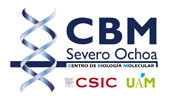Molecular mechanisms of sex-differences in metabolism physiology and disease
Prof. Sara Cogliati. Profesora Permanente Laboral. Departamento de Biología Molecular. UAM.
Our laboratory aims to understand the molecular mechanisms of metabolic sex differences in health and disease, explicitly exploring mitochondria’s role. Indeed, mitochondria are the central hub of metabolism and targets of sexual hormones, with a suggested role in modulating sex-specific differences in many physio-pathological conditions.
We are currently running two projects: one considering metabolism and one for cardiovascular disease. Since metabolism shows considerable differences between the two sexes, we are exploring the hypothesis that mitochondrial functions can be differently modulated in males and females and therefore determine important physiological differences.
To prove this, we are performing a wide analysis of mitochondrial functions and morphology, together with gene expression analysis and metabolomics approach (in collaboration with Christian Frezza’s laboratory, CECAD, Cologne). Our target tissues are the liver, muscle, and white adipose tissue of males and females mice, further clustered according to the estrous phase.
In parallel, to be able to study the role of sex steroids and different growth conditions on mitochondrial functions in vitro, we are generating two fibroblast cell lines from female and male mice that constitutively over-express the estrogen and androgen receptors.
Cardiovascular disease is the first death cause in women worldwide. Nowadays, we know that biological sex has a strong impact on cardiovascular performance however the molecular mechanisms are still unknown. In our lab, we aim to understand the mitochondrial role in the development of heart failure, a pathological condition that presents important clinical sex differences. Applying a biochemistry approach, electronic microscopy, and gene expression analysis, we are mapping the mitochondrial differences between male and female mice during the progression of heart failure. The ultimate goal is to identify some mitochondrial pathways that could be potential therapeutic targets for heart failure. Our preliminary data suggest that after transaortic constriction, fertile female mice are protected from cardiac hypertrophy and this correlates with less fibrosis and the maintenance of the mitochondrial network analyzed by electron microscopy.


